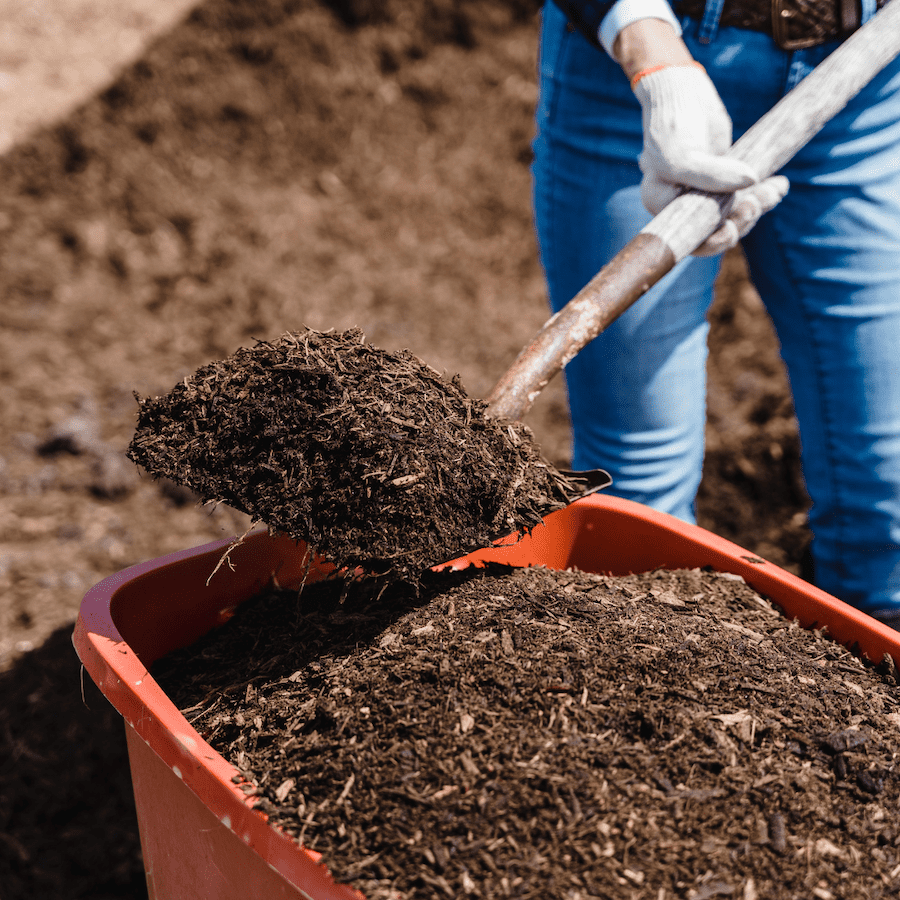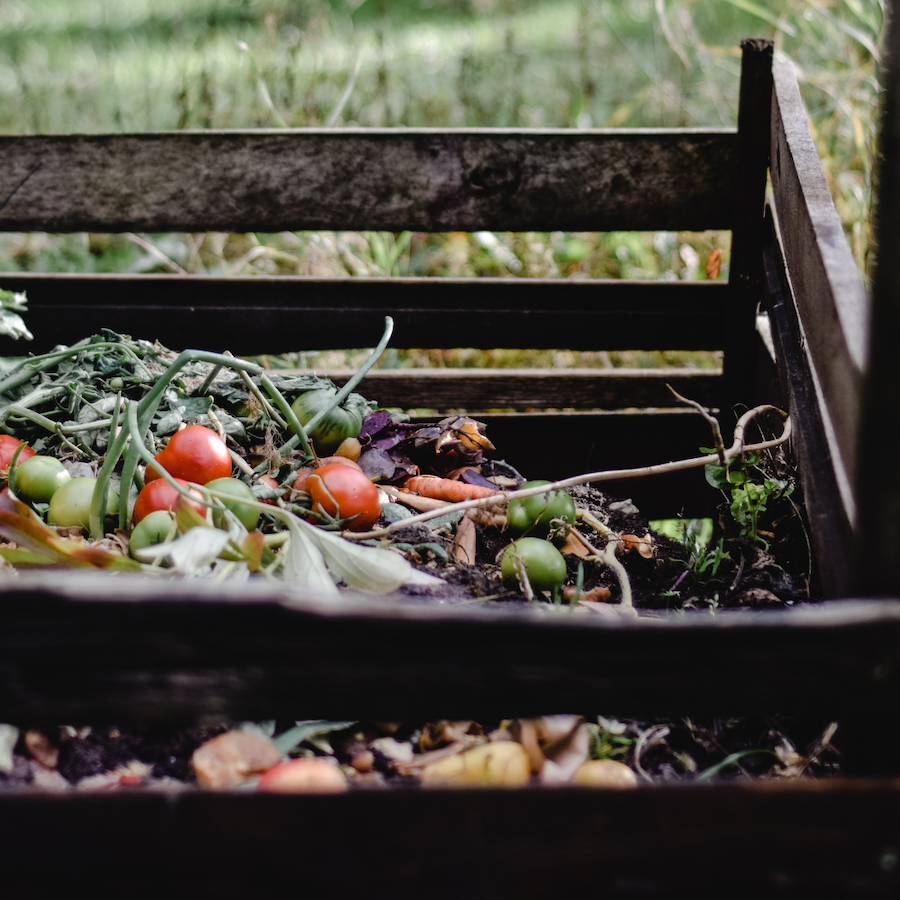Reduce Waste & Feed the Environment
Be a Compost Starter
Composting comes in many different forms and can be done with food waste as well as compostable packaging. The primary goal of composting is to cut down on the amount of waste sent to landfills, reducing CO2 emissions, and turning waste into usable material.
But, did you know that you can use your garden to help create nutrient-rich soil that will grow larger and more vibrant life? The complexity that is life breaks down into various, smaller and individual components at the end of life. Not only can your garden be used to create nutrient-rich soil, but your yard clippings can do the same thing.
I know what you’re thinking, compost stinks. You’re not wrong. As things die and break down it will smell, but, once the process is complete there won’t be a smell at all!
Things to Think About as A Compost Starter
One of the hardest parts of composting is getting started. You will need to build or buy a compost bin or dedicate a portion of your yard for a natural compost hole. This initial work can dissuade a lot of people from starting to compost.
One of the hardest bits of composting is learning what can be composted and what shouldn’t be composted. (Yes, just like recycling plastic there are some items that can and cannot be recycled.) But once you get that down, composting is easy.
Will my compost attract flies, rats, or smell really badly? Yes, to all three. To avoid these negative aspects, I recommend a closed system. The only thing I hold against open compost systems is rats, I just can’t.
If a full composting system isn’t a possibility for you, but you still want to recycle what you can, use compostable materials that will allow the produce and yard waste to break down and then will break down itself in a healthier manner in the rubbish yard. If you’re looking for yard work materials check out this LINK, if you’re composting in house check out this LINK.
1. Getting Started
As a compost starter, the first thing you will have to decide is how you are going to start composting. You will either need to build a compost bin or designate a section of the yard to dig a composting hole. Each of these has pros and cons, but you will need to find the way that works best for you.
Build Your Own System – Plastic Dustbin
If you’re just dipping your toe into composting you can build your own system with a plastic bin. First, drill holes along the side of the dustbin every 2-3 inches. This will allow for water to escape so your compost can break down and create usable material.
Ready Systems
Amazon has some great systems, depending on size and volume that you need. There are dual systems, or 2 separate compartments that allow for curating of 1 batch, while adding current refuse to the other side. The systems are all designed to be tumbled a few times every few days. They all have doors to keep all the curating goodness to itself on the inside. They have their own aeration systems built in as well.

We have compiled the top 5 composting systems available on Amazon. The most popular, and highly rated is the IM4000 Dual Chamber Tumbling Composter (Black). As one of the cheaper systems, it’s simple and holds 37 gallons. Dual systems are slightly higher in cost.
| Product | Capacity | Price | Rating | |
|---|---|---|---|---|
| IM4000 Dual Chamber Tumbling Composter (Black) | Single tumbler | 37 gallons | $80.54 | 4.5/5 (15,785) |
| Dual Chamber Compost Tumbler – Easy-Turn, Fast-Working System – All-Season, Heavy-Duty, High Volume Composter with 2 Sliding Doors – (2 – 18.5gallon /70 Liter) | 2 door, dual system | 2×18.5 gallons | $109.99 | 4.3/5 (3,416) |
| VIVOSUN Outdoor Tumbling Composter Dual Rotating Batch Compost Bin, 43 Gallon Orange Door | 2 door, 2 system | 43 gallons | $109.99 | 4.4/5 (6,218) |
| Miracle-Gro Small Composter – Compact Single Chamber Outdoor Garden Compost Bin Heavy Duty – UV Protected Turning Barrel Tumbling Composter (27.7 gallons) | Single tumbler | 27 gallons | $79.80 | 4.3/5 (3,133) |
| Garden Compost Bin from BPA Free Material, Dual Rotating Outdoor Composting Tumblers (43 Gallon,Green) | 2 door, dual system | 43 gallons | $94.99 | 4.5/5 (2,918) |
2. How To Make Compost
I always thought composting was a passive hobby, however, I’ve learned it takes work. In truth, composting is a delicate balance between microbes. One of the nice features of a dual system, is that it allows you to run 2 different batches. Each batch will take a couple of weeks to complete the process. Open pits can take up to 6+months to curate if not aerated.
The first step of a compost starter is to collect your food scraps in a countertop composter bin. This allows you easy access to your bin where you create your waste. Once the bin is full you can remove it to the larger container outside. Compostable trash bags are also a thing. I use them, but my sister doesn’t, it comes down to cleaning preference. If your kitchen is warm and you don’t use your compost bin often the food will start to break down there, and water will also collect.
As you consider your first batch your recipe is food scrapes, carbon (something brown), and nitrogen (something green), which translates to food scraps, leaves, (the something brown) and grass clippings (the something green). All you need now is heat. For most of the country summer is the best time to do your composting, this doesn’t mean that winter composting is impossible, it just takes a little more effort.
It may take some time to get the proper ratio of food scraps, nitrogen, and carbon, but start your compost with a small layer of dirt, a layer of food scraps, a layer of carbon, and a layer of nitrogen. From there you will want to watch how your batch curates, if it is creating too much water add more carbon , which will soak up the water and means you should probably increase the carbon ratio on the next batch.
As you work on your compost you may want to wear a mask to diminish the smell, but that should dissipate after a few days. Make sure to shake your system up every few days to release by-products, which includes water. Shaking it up will increase the health and level out the rate of decomposition and nutrients of the compost.
If you notice your compost is getting too wet, add dry leaves or newspaper to help keep it dry. Also consider covering your system during rain, this will reduce any additional moisture seeping into your system and throwing off ratios.
After a few weeks of composting, you will have your first layer of usable compost.
What can’t be composted
One of the most common questions from a compost starter is, what food can I put in the compost? The rule of thumb is that anything that can be eaten and grown in a field or garden can be composted. To keep from contaminating your composting system know that not all waste is equal in the eyes of composting. Here is a list of things to avoid using in your composting.
- No meat/seafood
- No egg shells, unless they have been sterilized first
- No dairy
- No oils
- No fats
- No plants of woods treated with pesticides or preservatives
- No weeds that have gone to seed
- No pasta
- No walnuts
What can be composted
This list always surprises me, and if I had known as a compost starter I could have had really reduced the amount of hair in my vacuum and trash. I can never commit a crime, my hair is everywhere, and now it’s in my compost. Aside from food scrapes you can also include the following in your compost:
- Dryer lint
- Hair or fur
- Spent hops & malts
- Used paper napkins and paper towels
- Aquarium plants
- Un-popped or burnt popcorn
- Wooden chopsticks and toothpicks
- Cardboard or paper plates that are small and uncoated
3. How To Use Compost
And then? That is my second sister’s question after hearing all about composting. So what do you get out of it? Well, all you compost starter friends, after a few weeks of composting, you will have a usable byproduct, dirt, that you can use in your garden and potted plants in the house. It’s basically brown gold. Your dirt is nutrient-rich and serves as food for your plants and gardens (your plants don’t just need sunshine and water to thrive).
The composted dirt will also serve in the place of fertilizer. A benefit of composted dirt is that you can mix it into your top soil at the beginning of every growing season, it will create a more fertile bed for your plants to grow. You will see results in the speed with which your plants grow, as well as how hearty your plants become.
If you have a landscaping business, I know it is easier to just put everything into the green dump, but think of all the money that free refuse could make for you. Fresh , local grown compost will fetch a nice price. The process is a little different without food waste, check out our post on recycling your yard waste.
Other tools
Some other tools that have helped me as a compost starter are:
- Reusable waste bag 30 gallons
- Leaf tarp
- Compostable yard care bags 30 gallons
- 3 gallons food scrapes bag
- Compost caddy Simple Human Trash compatible metal
- Kitchen Utopia compost bin metal
If, at the end of all of this, you decide that composting on your own is not something you’ll be able to do, check out black earth compost, a curbside service that removes your waste and provides you with a bag of composted dirt.

